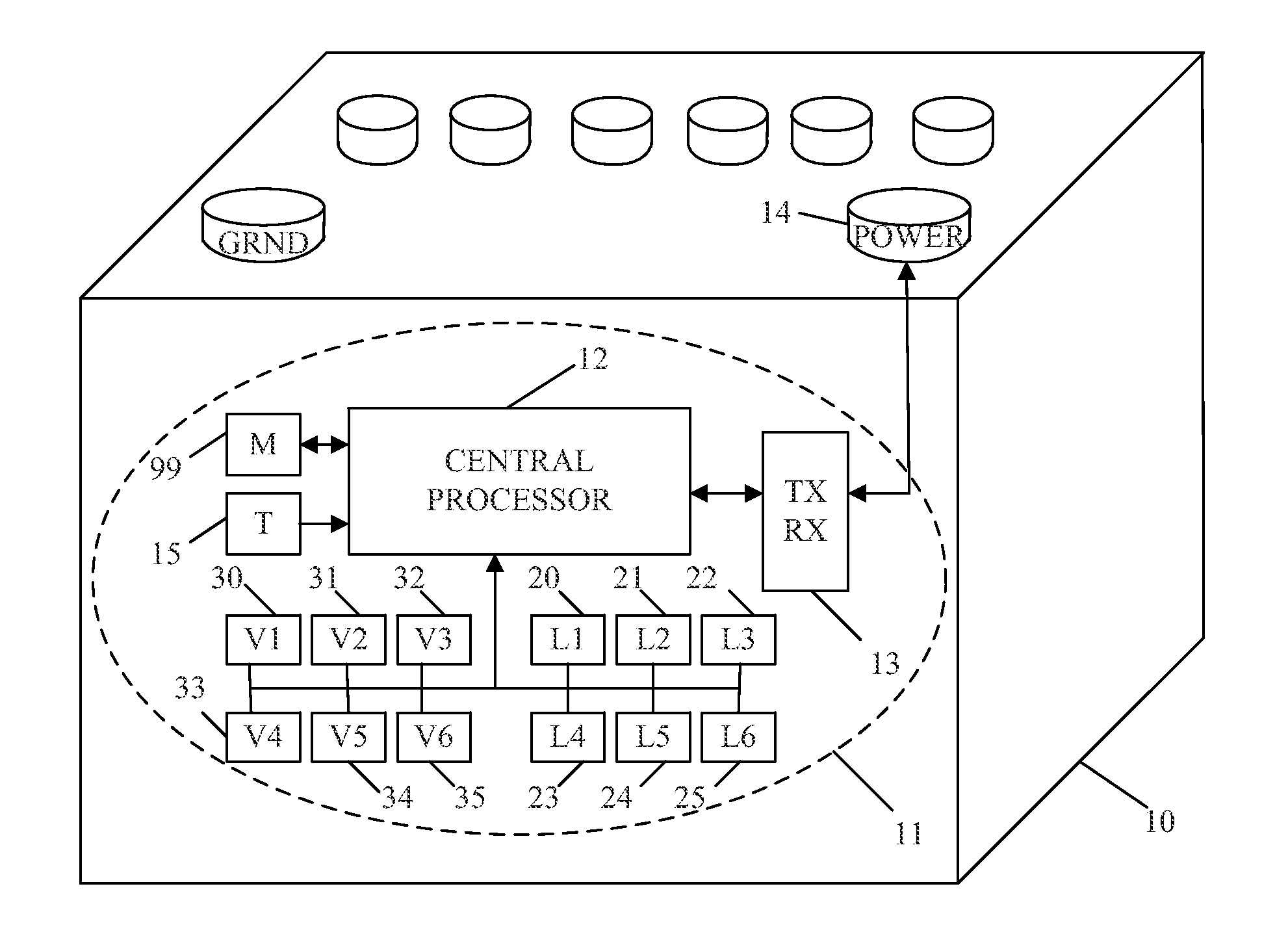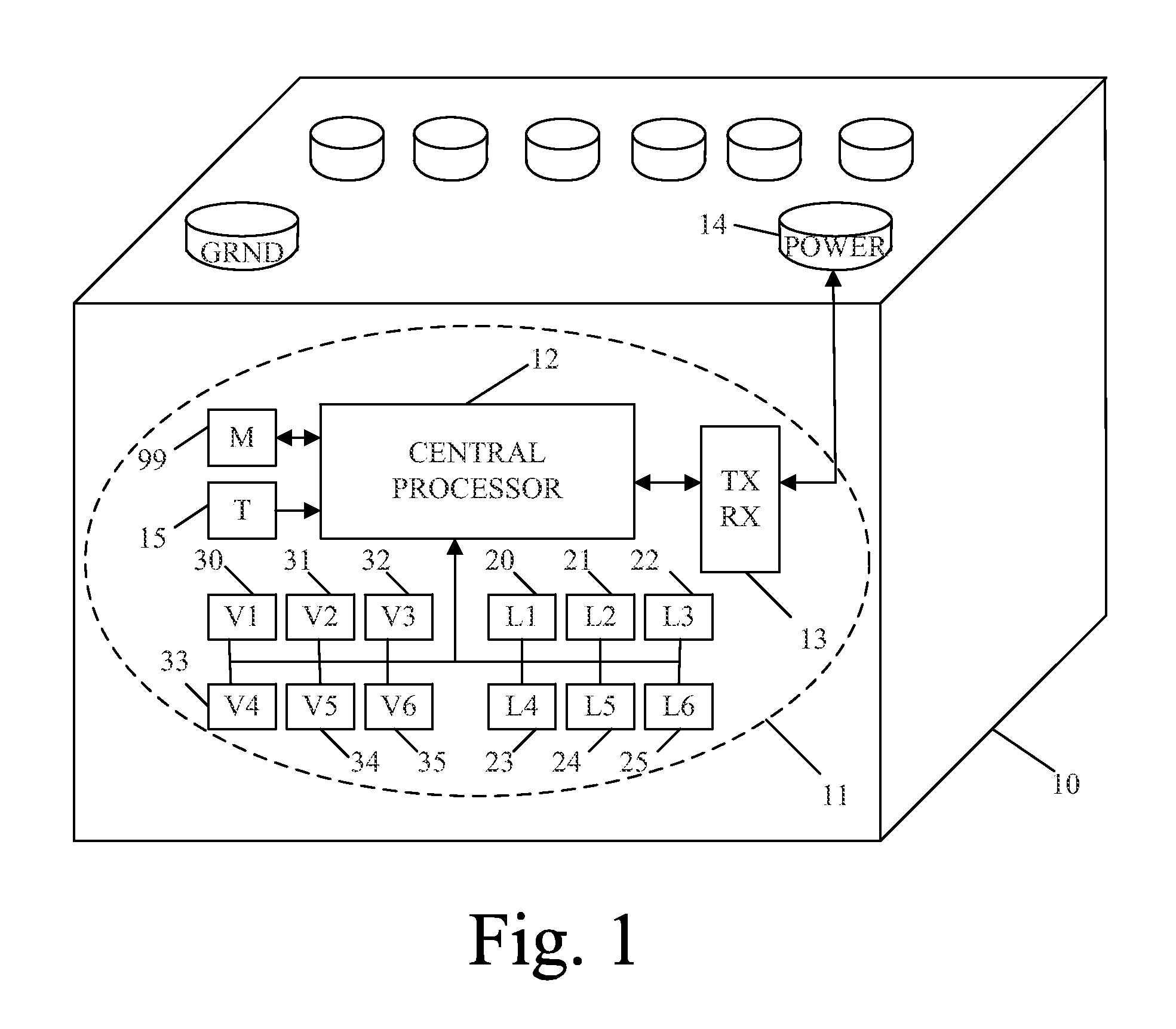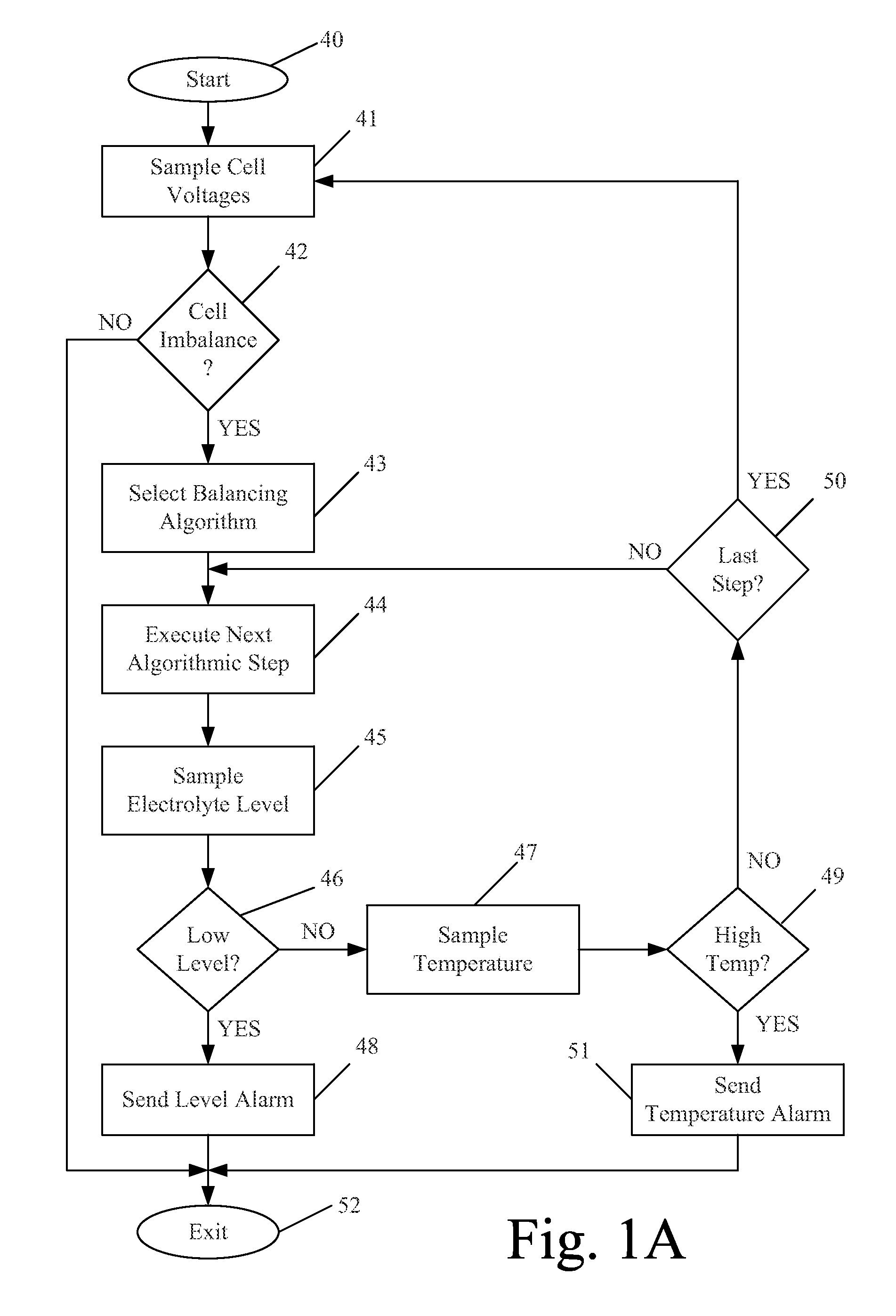Embedded battery management system and methods
a battery management system and battery technology, applied in the field of batteries, can solve the problems of battery failure being the number one complaint of new car owners, battery failure typically unexpectedly without warning, and the inability to determine the level of electroly
- Summary
- Abstract
- Description
- Claims
- Application Information
AI Technical Summary
Benefits of technology
Problems solved by technology
Method used
Image
Examples
Embodiment Construction
[0037]The following descriptions are provided to enable any person skilled in the art to make and use the invention and are provided in the context of the particular embodiments. Various modifications to these embodiments are possible and the generic principles defined herein may be applied to these and other embodiments without departing from the spirit and scope of the invention. The embodiments described herein perform their intended functions using a computer system embedded inside a lead-acid battery. Special notification is made with regard to battery technology. While the present invention is particularly well-suited to lead-acid batteries, the generic principles described herein apply to any battery type. Thus the invention is not intended to be limited to the embodiments shown but is to be accorded the widest scope consistent with the principles, features and teachings disclosed herein.
[0038]In accordance with one embodiment, the present invention makes use of a computer sy...
PUM
 Login to View More
Login to View More Abstract
Description
Claims
Application Information
 Login to View More
Login to View More - R&D
- Intellectual Property
- Life Sciences
- Materials
- Tech Scout
- Unparalleled Data Quality
- Higher Quality Content
- 60% Fewer Hallucinations
Browse by: Latest US Patents, China's latest patents, Technical Efficacy Thesaurus, Application Domain, Technology Topic, Popular Technical Reports.
© 2025 PatSnap. All rights reserved.Legal|Privacy policy|Modern Slavery Act Transparency Statement|Sitemap|About US| Contact US: help@patsnap.com



